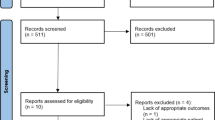Abstract
Endoscopic papillary balloon dilatation (EPBD) has been recently used in conjunction with endoscopic sphincterotomy (EST) for the removal of common bile duct (CBD) stones. The present study was aimed at assessing the safety and outcome of sequential EPBD following EST for CBD stones. A total of 74 patients (43 females, mean age 41 years) with ≥10-mm stone(s) in the CBD were selected for the procedure, which included limited EST followed by EPBD with balloon dilators of 10–18 mm in size. Eleven patients had undergone EST and unsuccessful stone removal earlier. Forty-nine patients had symptoms of CBD stones, while 25 were detected on imaging. Eleven patients had previous CBD stent in situ and four had T-tube in situ. The stone size was 10–12 mm in 34, 13–14 mm in 26, and ≥15 mm in 14 patients. Thirty-one patients had a single stone, while 43 had ≥2 stones. The successful removal of stones was achieved in 68 (91.9%) patients; 62 in the first attempt, five in the second, and one in the third. Six patients were deemed to be “failures.” In two of them, the stones could be removed after mechanical lithotripsy. Complications were seen in 16 patients, with self-limiting pain in 13, self-limiting ooze in five, melaena in one, and mild pancreatitis in two. One patient had impaction of the dormia basket. We conclude that EPBD following EST is safe and effective in removing stones ≥10 mm in size in over 90% of patients.
Similar content being viewed by others
References
Freeman ML, Nelson DB, Sherman S, et al. Complications of endoscopic biliary sphincterotomy. N Engl J Med. 1996;335:909–918. doi:10.1056/NEJM199609263351301.
Bergman JJ, van Berkel AM, Groen AK, et al. Biliary manometry, bacterial characteristics, bile composition, and histologic changes fifteen to seventeen years after endoscopic sphincterotomy. Gastrointest Endosc. 1997;45:400–405. doi:10.1016/S0016-5107(97)70151-2.
Sugiyama M, Atomi Y. Long-term effects of endoscopic papillary balloon dilation on gallbladder motility. Dig Dis Sci. 2004;49:1803–1807. doi:10.1007/s10620-004-9574-3.
Hakamada K, Sasaki M, Endoh M, et al. Late development of bile duct cancer after sphincteroplasty: a ten- to twenty-two-year follow-up study. Surgery. 1997;121:488–492.
Tocchi A, Mazzoni G, Liotta G, et al. Late development of bile duct cancer in patients who had biliary-enteric drainage for benign disease: a follow-up study of more than 1,000 patients. Ann Surg. 2001;234:210–214. doi:10.1097/00000658-200108000-00011.
Staritz M, Ewe K, Meyer ZBKH. Endoscopic papillary dilation (EPD) for the treatment of common bile duct stones and papillary stenosis. Endoscopy. 1983;15(Suppl 1):197–198.
Gerke H, Baillie J. To cut or stretch? Am J Gastroenterol. 2004;99:1461–1463. doi:10.1111/j.1572-0241.2004.40358.x.
Disario JA, Freeman ML, Bjorkman DJ, et al. Endoscopic balloon dilation compared with sphincterotomy for extraction of bile duct stones. Gastroenterology. 2004;127:1291–1299. doi:10.1053/j.gastro.2004.07.017.
Tsujino T, Isayama H, Komatsu Y, et al. Risk factors for pancreatitis in patients with common bile duct stones managed by endoscopic papillary balloon dilation. Am J Gastroenterol. 2005;100:38–42. doi:10.1111/j.1572-0241.2005.40638.x.
Watanabe H, Yoneda M, Tominaga K, et al. Comparison between endoscopic papillary balloon dilatation and endoscopic sphincterotomy for the treatment of common bile duct stones. J Gastroenterol. 2007;42:56–62. doi:10.1007/s00535-006-1969-9.
Baron TH, Harewood GC. Endoscopic balloon dilation of the biliary sphincter compared to endoscopic biliary sphincterotomy for removal of common bile duct stones during ERCP: a metaanalysis of randomized, controlled trials. Am J Gastroenterol. 2004;99:1455–1460. doi:10.1111/j.1572-0241.2004.30151.x.
Weinberg BM, Shindy W, Lo S. Endoscopic balloon sphincter dilation (sphincteroplasty) versus sphincterotomy for common bile duct stones. Cochrane Database Syst Dev. 2006;18:CD004890.
Ersoz G, Tekesin O, Ozutemiz AO, et al. Biliary sphincterotomy plus dilation with a large balloon for bile duct stones that are difficult to extract. Gastrointest Endosc. 2003;57:156–159. doi:10.1067/mge.2003.52.
Bang S, Kim MH, Park JY, et al. Endoscopic papillary balloon dilation with large balloon after limited sphincterotomy for retrieval of choledocholithiasis. Yonsei Med J. 2006;47:805–810.
Koruk I, Parlak E, Seçilmiş S, et al. Endoscopic sphincteroplasty with large balloon dilatation for extraction of difficult common bile duct stones. Dig Dis Sci. 2008;53:1737–1738. doi:10.1007/s10620-007-0060-6.
Maydeo A, Bhandari S. Balloon sphincteroplasty for removing difficult bile duct stones. Endoscopy. 2007;39:958–961. doi:10.1055/s-2007-966784.
Cotton PB, Lehman G, Vennes J, et al. Endoscopic sphincterotomy complications and their management: an attempt at consensus. Gastrointest Endosc. 1991;37:383–393.
Mac Mathuna P, White P, Clarke E, et al. Endoscopic sphincteroplasty: a novel and safe alternative to papillotomy in the management of bile duct stones. Gut. 1994;35:127–129. doi:10.1136/gut.35.1.127.
Mugica F, Urdapilleta G, Castiella A, et al. Selective sphincteroplasty of the papilla in cases at risk due to atypical anatomy. World J Gastroenterol. 2007;13:3106–3111.
Vlavianos P, Chopra K, Mandalia S, et al. Endoscopic balloon dilatation versus endoscopic sphincterotomy for the removal of bile duct stones: a prospective randomised trial. Gut. 2003;52:1165–1169. doi:10.1136/gut.52.8.1165.
Yasuda I, Tomita E, Enya M, et al. Can endoscopic papillary balloon dilation really preserve sphincter of Oddi function? Gut. 2001;49:689–691. doi:10.1136/gut.49.5.686.
Author information
Authors and Affiliations
Corresponding author
Rights and permissions
About this article
Cite this article
Kochhar, R., Dutta, U., Shukla, R. et al. Sequential Endoscopic Papillary Balloon Dilatation Following Limited Sphincterotomy for Common Bile Duct Stones. Dig Dis Sci 54, 1578–1581 (2009). https://doi.org/10.1007/s10620-008-0534-1
Received:
Accepted:
Published:
Issue Date:
DOI: https://doi.org/10.1007/s10620-008-0534-1




